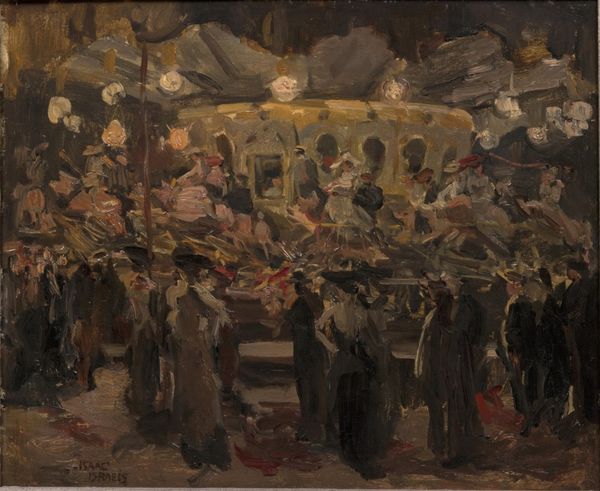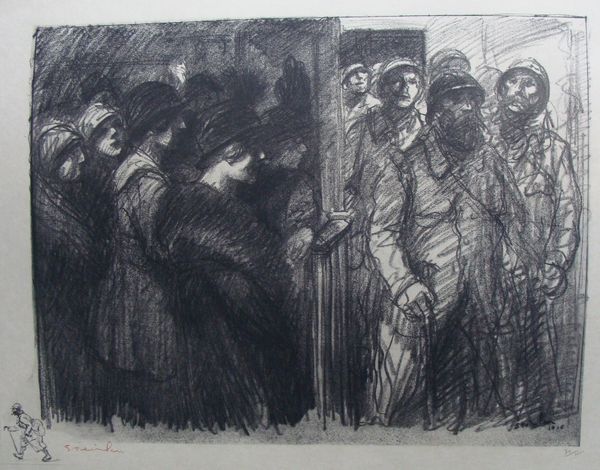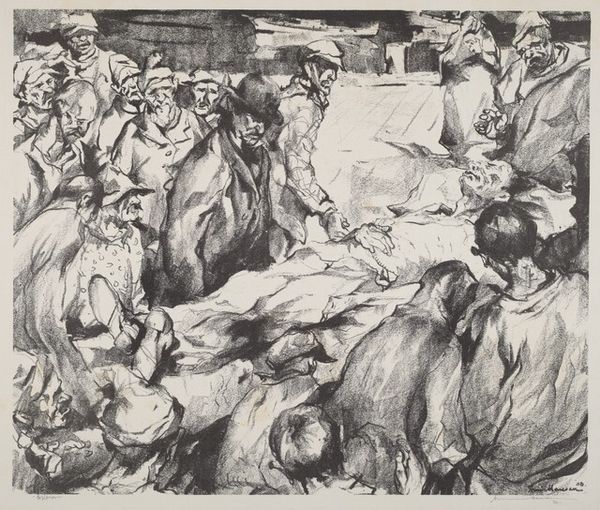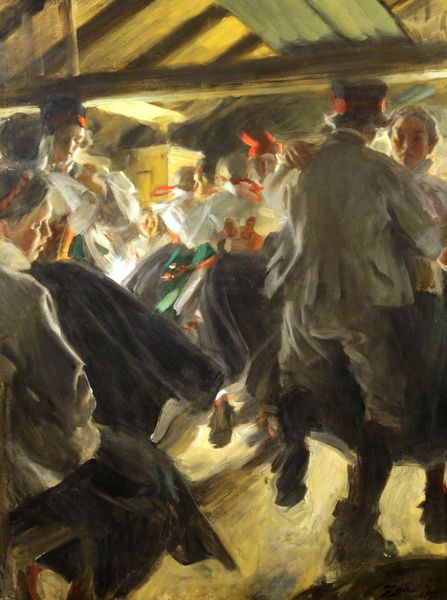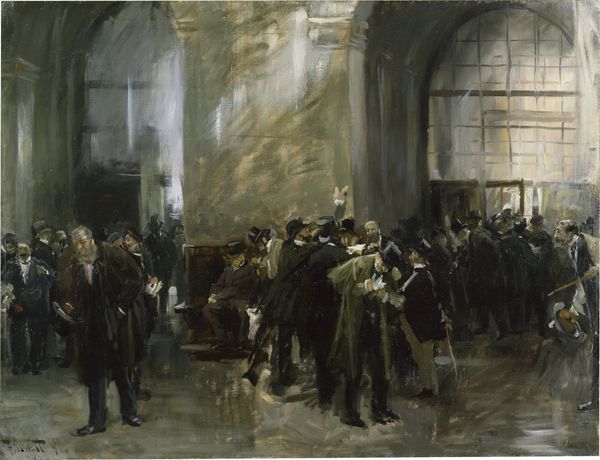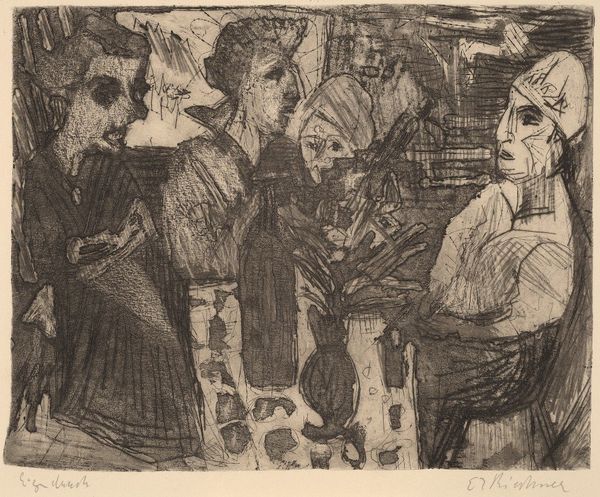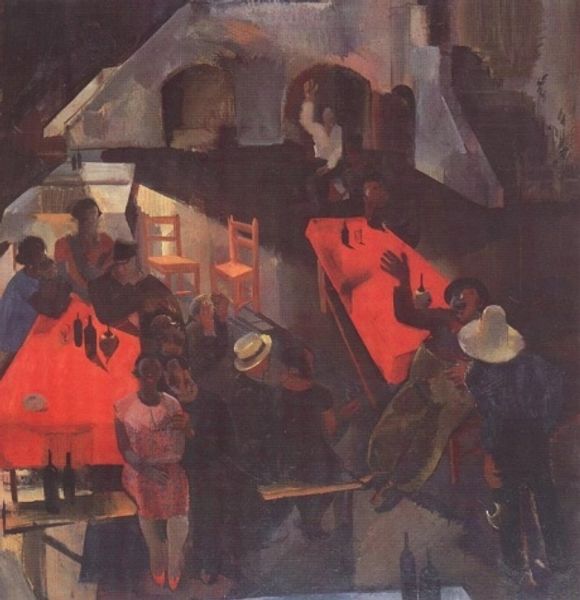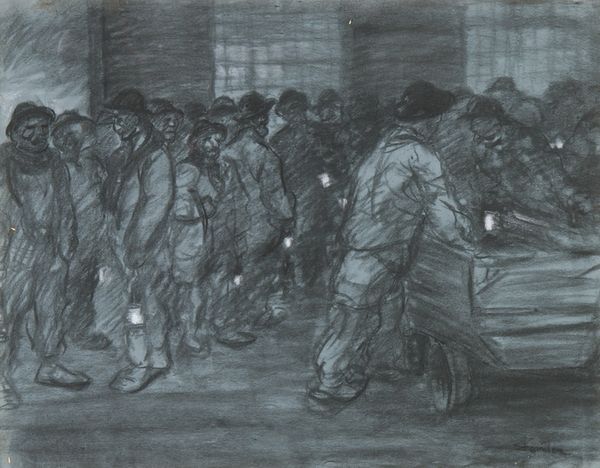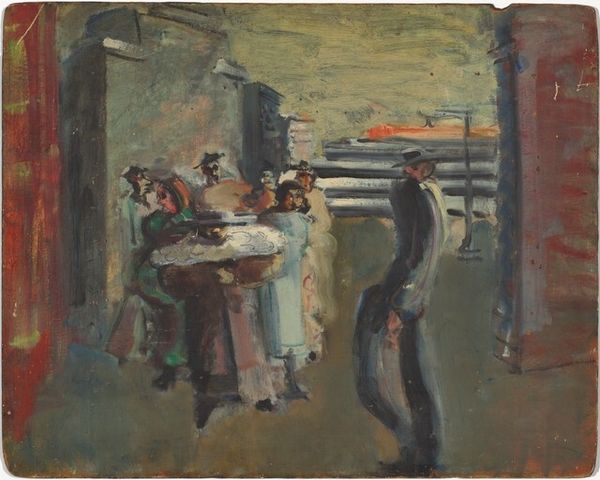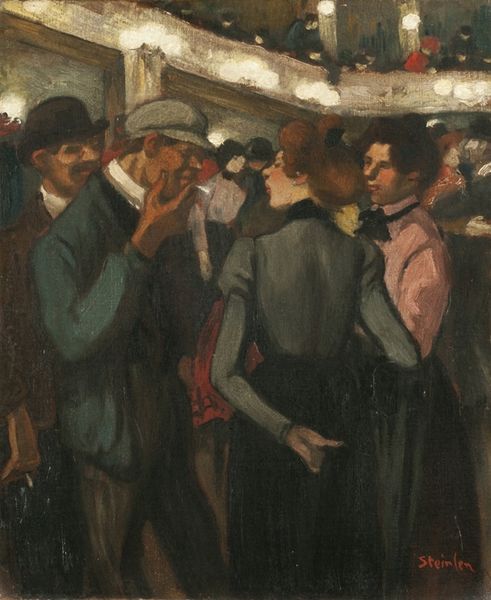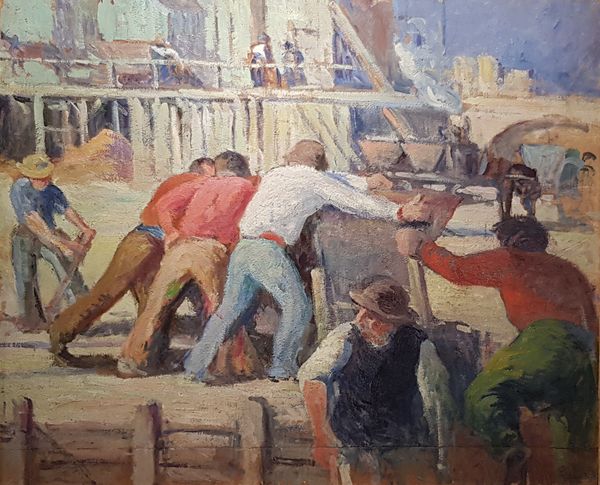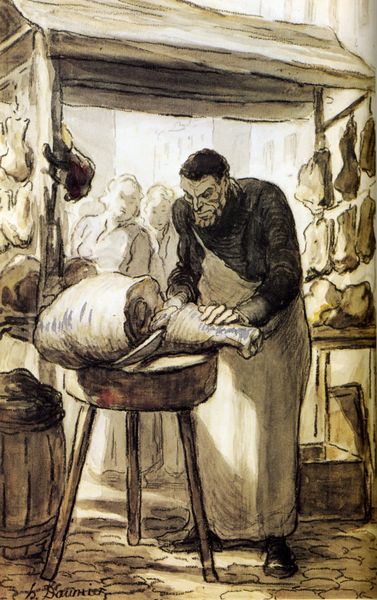
oil-paint
#
narrative-art
#
oil-paint
#
figuration
#
oil painting
#
neo expressionist
#
expressionism
#
genre-painting
#
expressionist
Copyright: Periklis Vyzantios,Fair Use
Curator: What strikes you first about this painting, titled "Hunger" by Periklis Vyzantios, executed in oil paint? Editor: Immediately, I feel the weight of grief and the unsettling nature of the scene, dominated by somber blues and grays. There's a pall over everything, a visual symbol for deprivation and despair. Curator: Absolutely. The expressionistic style, with its emphasis on emotional impact over precise representation, intensifies that feeling. Knowing Vyzantios painted during a period marked by significant social upheaval allows us to consider this a powerful commentary. It confronts us with uncomfortable truths about social inequality and the lived realities of marginalized communities. Editor: The visual language reinforces this. The subdued palette acts as a sort of shroud, the figures looming in darkness reminiscent of mourning iconography across cultures. The crowd, rendered almost faceless, converges on what appears to be a body, accentuating a loss of individual identity. Curator: Precisely. This representation speaks volumes. The huddled masses, indistinct and anonymous, emphasize the systemic nature of poverty and disenfranchisement. It highlights the dehumanizing effects of extreme hardship. Editor: It's almost a ritualistic scene of lament. The use of oil allows a deep luminosity, and the figures are partially obscured, which heightens a sense of mystery but also collective trauma. It recalls classical depictions of mourning but grounds them in the gritty reality of contemporary life. Curator: This connection to classical motifs is a very compelling reading, drawing on archetypal representations of suffering that resonate throughout history. "Hunger" becomes less a snapshot of a single event, and more a timeless allegory of social injustice and its devastating human cost. Editor: It really compels us to remember, to understand, and potentially act, by witnessing how those symbols are renewed throughout different eras and different material sufferings. Curator: It makes you consider what has changed and what has stayed painfully the same. It serves as a constant and sad reminder of our collective failures, I suppose.
Comments
No comments
Be the first to comment and join the conversation on the ultimate creative platform.

